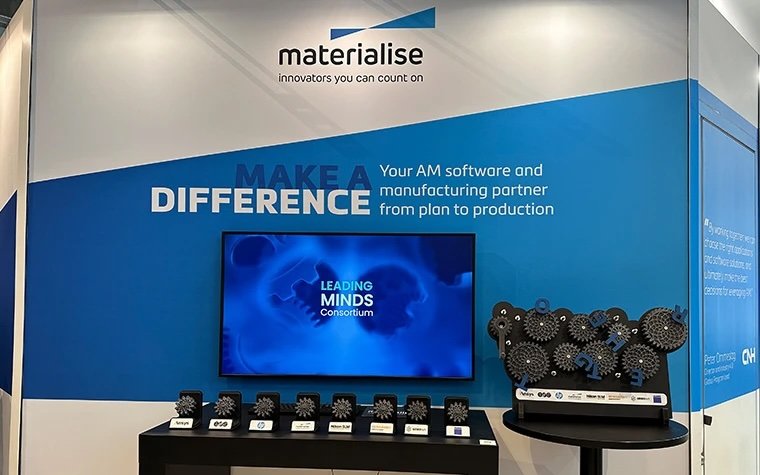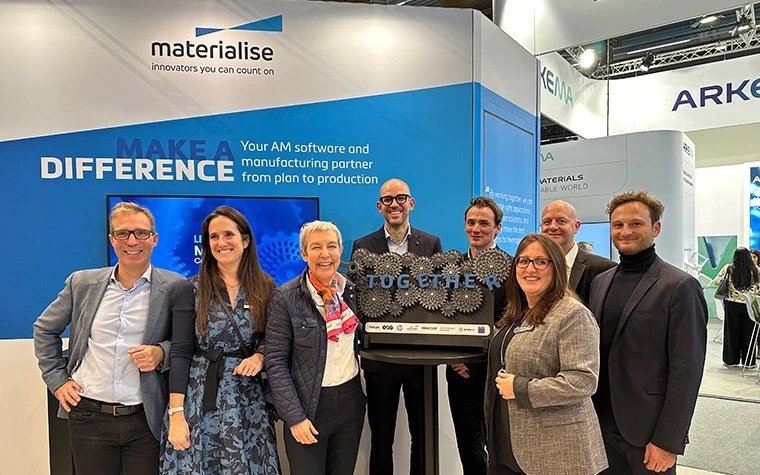Leading 3D Printing Companies Form Consortium to Accelerate Industrial Adoption and Address Key Challenges in Manufacturing
Leading Minds to create a common language to integrate 3D printing across industries.
www.materialise.com

At Formnext 2024, a new consortium of leading 3D printing companies has been announced to address the most pressing challenges that manufacturers face in adopting and scaling 3D printing technology for industrial use. Named Leading Minds, this collaboration brings together Ansys, EOS, HP, Materialise, Nikon SLM, Renishaw, Stratasys, and TRUMPF. The consortium seeks to overcome many of the barriers hindering the adoption of 3D printing, enabling manufacturing companies to integrate and scale 3D printing solutions more effectively. The consortium’s initial initiative aims to create a common language framework for 3D printing.
According to the consortium, “3D printing has proven its worth across various sectors, transforming product design and providing highly customized solutions. Today, 3D printing is transitioning from niche innovations to high-volume manufacturing. To achieve this, the industry must overcome skepticism and deliver concrete, scalable solutions that will cement 3D printing as a cornerstone of modern industrial production.”
Challenges in adoption and scaling — the shift from "why?" to "how?"
Despite its promise, many manufacturing companies still encounter barriers to 3D printing adoption. According to a survey*, companies recognize 3D printing as a key trend in manufacturing, but almost all companies (98%) experience challenges and barriers to adopting 3D printing, such as a lack of expertise, perceived high costs, and sometimes complex integration with established processes. Overcoming these hurdles requires more than individual efforts; it calls for industry-wide collaboration to make the technology more accessible to a broader range of manufacturers.
As the conversation shifts from "Why should we adopt 3D printing?" to "How can we effectively integrate it?", manufacturers are seeking concrete strategies for overcoming these obstacles. The Leading Minds consortium was formed in direct response to these challenges.
Uniting to advance 3D printing
The consortium brings together some of the most innovative and influential companies in the 3D printing industry. The founding members — Ansys, EOS, HP, Materialise, Nikon SLM, Renishaw, Stratasys, and TRUMPF — share a common belief in the power of 3D printing. Individually, each member has pushed the boundaries of what is possible with 3D printing, and now, through collaboration, they aim to ensure that 3D printing is more accessible and scalable across diverse industries. The consortium is open to other companies joining.
The consortium stated, “Leading Minds represents a collective commitment to reshaping the future of manufacturing through the transformative power of 3D printing. The consortium aims to address pressing challenges faced by manufacturers today. This includes enhancing production efficiency, reducing waste, and enabling faster, more responsive supply chains. Through these efforts, the consortium will help create a more adaptable, sustainable, and versatile manufacturing ecosystem.”

The objective: driving collaboration for industry-wide solutions
The primary objective of the Leading Minds consortium is to increase awareness of 3D printing’s capabilities across more industries and eliminate hurdles that manufacturers face. This collective effort is not just about enhancing 3D printing but about taking practical, actionable steps to reshape the manufacturing landscape to be more innovative, sustainable, and capable of meeting the evolving needs of advanced manufacturing.
Next steps: a common language for 3D printing
One of the consortium’s first initiatives is to address the fragmentation and complexity of industry nomenclature to ensure that all players can operate with a clearer understanding of 3D printing’s capabilities. At present, many companies and technologies operate using different terminology for similar concepts, making it difficult to collaborate effectively and limiting the full potential of 3D printing in industrial production. To resolve this “modern Tower of Babel” scenario, the consortium intends to develop a common language framework that facilitates better communication, allowing manufacturers and technology providers to work together more effectively.
www.materialise.com

